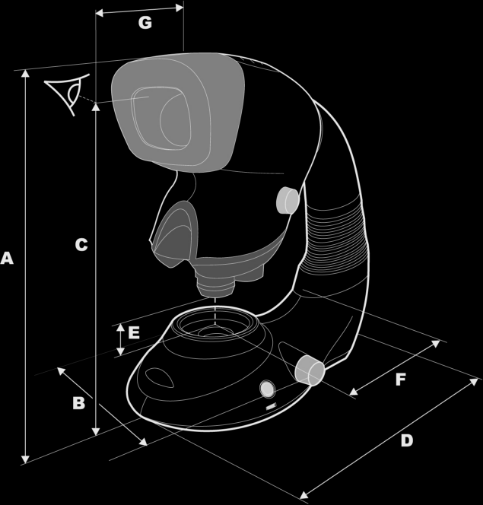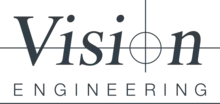FAQ’S
General Faq’s
Vision Engineering is continuously investing in research and development. Listening to our customers helps us feed requirements back into the design process, resulting in products that users need and want.
Currently you can’t buy online, but we do have over 120 stock holding distributors around the world. Please contact us to find out your nearest authorised distributor.
Yes you can buy spare parts such as bulbs and power supplies. Please contact your local sales office or distributor to find out how to buy them for your microscope.
From time to time Vision Engineering posts job vacancies on this website. If there is no job vacancy and you would like to send in your CV for future reference, please contact us.
Vision Engineering attends hundreds of tradeshows around the world, covering industries from dental technology through to aerospace. Full list of exhibitions and tradeshows can be found on our Events page.
Yes, all Vision Engineering products come with a warranty. This is usually held for a year after the product has been purchased. For more information, please see our warranty statement.
If you did not purchase directly from Vision Engineering, you may find that our distribution partners offer different warranty periods. If this is the case, you will need to discuss this with them directly.
All Vision Engineering products conform to European standards set out in the applicable EC directives.
We like to keep all of our customers up to date with new products and existing product information. Join our mailing list.
If you wish to consider becoming a distribution partner, please visit our distribution opportunities page. Here you will find comprehensive information on what is involved and what our criteria includes.
There are a number of ways you can get to see a product demonstrated.
- You can visit our tradeshow pages which tells you were we are exhibiting around the world.
- Contact us and find your nearest distribution partner. Some have showrooms and will be happy to demonstrate a product for you.
- Request a demonstration at your place of work.
Vision Engineering is happy to discuss your requirements. Several of our customers utilise our technology to enhance their products, usually to improve their ergonomics. If you are an Original Equipment Manufacturer and would like to know more about this service visit our Contract Manufacturing page.
Yes, we provide both a service and calibration facility, and you can benefit from this by contacting your nearest sales branch. Please contact us for further information.
Vision Engineering has been manufacturing for more than 60 years. During this time we have won several awards and our innovative technology has been patented. When you buy a product from Vision Engineering, you can expect professional after sales service and fully trained staff and distribution partners all around the world, to help with you both product and technical knowledge.
Product Faq’s
- Benchkam
- Circus LED
- DRV-Z1
- EVO Cam II
- Hawk Duo
- KFM LED
- LFM LED G2
- LVC series
- Lynx EVO
- Mantis
- Swift Pro
- SX-Series
- TIM5
- TVM-Series
- Wave LED
Yes. Please contact your Vision Engineering representative for details on the available graticules
Yes. The trinocular construction allows for a camera to be mounted to the camera port tube using a C-mount adapter. A range of cameras are available, please contact Vision Engineering for further information. When paired with appropriate software, functionality can range from image acquisition and basic measurement, to more advanced applications such as image processing, stitching images together and image analysis.
Yes, all measurement data can be exported into an open Excel file instantly, or saved in a specific location for reviewing later.
The SX45-TR Elite is designed with an extra optical path to allow a camera to be fitted for display and image capture. A selection of Vision Engineering cameras and software are available for viewing, capture, reporting and other.
Camβ includes a measurement function that can be used for quick simple measurements.
Yes. it is possible to get measurements using Lynx EVO in the same way as can be achieved with other stereo microscopes. These are typically; via the use of a graticule or via the use of the optional camera module and measurement software
Our TVM systems are equipped with a 5MP camera and a telecentric lens that provide a sharp, distortion-free image. Therefore, in addition to measuring and checking if your parts are within tolerance, you can also use the TVM to identify defects on the surface of the components.
Yes, you can combine video (non-contact) and touch probe (contact) measurements in the same measurement routine. With the optional probe rack, the LVC will automatically pick up the right probe when contact measurement is needed and safely park it when finished.
Yes. The Camβ can be used with the supplied HDMI cable to connect direct to a monitor to allow users to share images with an audience. Useful for training and demonstration.
Yes. EVO Cam II can be used to perform simple measurements, with customisable overlay grid and cursors. Sometimes called dimensioning.
Yes, Mantis Elite has an optional centre point illuminator which shines light down the optical path and can be used to illuminate blind holes so all the details can be clearly seen
Yes. A polariser and analyser are available for incident light.
There are options that allows you to view your sample with transmitted and incident light independently or simultaneously. The TIM5 is available in two different system kits: TIM5-EPI includes incident illumination only. TIM5-SSI includes incident and transmitted light sources. Please ensure you select the correct model for your needs on ordering.
When selecting your system you can choose objectives that are suitable for either bright field illumination only or bright and dark field illumination.
Yes. The optical design of the Lynx EVO head projects the image into the users eyes. If the user wears task specific eye glasses these can be worn to correct the users sight without affecting the performance of the Lynx EVO. In the same way safety glasses and can also be worn during use.
Yes. it is possible to add the STAYS lenses to the magnifiers to increase the magnification. The maximum total magnification possible is 4.75x
Yes. The telecentric lenses fitted to our TVM35 and TVM20 systems are designed to provide large FOV and depth of field so that more of the component can be displayed in focus. Usually these systems offer lower magnification than standard measuring microscopes. However the high resolution of the images produced by TVM allow really small features to be measured accurately too
No. DRV-Z1 allows the saving of paired images which can be shared and used to reproduce the stereo view in separate DRV-Z1 systems.
No. DRV-Z1 intuitive controls makes it easy to use from the start. A comprehensive user manual is provide with the system.
No. EVO Cam II’s intuitive controls makes it easy to use from the start.
Image can be captured either direct to a USB memory stick, via a PC connected through the supplied USB3 port and cable, or via an optional HDMI image capture device
Lynx EVO includes a detent which can be set at any point within the zoom range. The detent works as a physical marker that if felt as the zoom control moves past it. Like a click stop, the detent causes the zoom to click into the set magnification before the user can zoom past in either direction ensuring the user returns to the same place time and again. Fixed magnification configurations offers set magnifications (refer to Technical specifications). Fixed magnification configuration offers set magnifications (refer to Technical specifications).
We measure height or depth by focusing the system on features at different heights, for example a line or a point at the top and bottom of a step, and then simply construct a distance measurement between these features. If you are using an optical measuring system to measure in the Z-axis often, we recommend using a higher magnification objective with a small depth of field, so that you can focus more repeatably on the features measured.
Lynx EVO utilises patented dynascope technology to project stereo images into the users eyes.
Mantis is a stereo microscope, without eyepieces. Twin optical paths pass through the patented optics of Mantis, exiting the single viewing lens as separate (stereo) optical paths, just as they would with a conventional stereo microscope. The operator sees a stereo image with high contrast and high resolution.
As with all microscope systems there is a reduction in Field Of View (FOV) of what the camera sees, compared to what you would see through Mantis Elite-Cam HD. The view through Mantis optical head is a circular area, whereas the camera image is a rectangle.
DRV-Z1 uses patented technology that delivers two high resolution channels to the left and right eye giving crisp stereo full HD 3D visualisation without the need for special eyewear.
The large field of view (FOV) of TVM allows more features to be measured instantly even if the part you are measuring is larger than the field of view. Therefore you do not need to move the measurement stage as much as you would on a standard manual measuring microscope. If your component fits within the FOV (35mm diagonally) the measurement is instant.
Our M-series measurement software is as intuitive as possible whilst maintaining advanced functionality. Once a first off measurement is done, the operator can save the measurement steps, which becomes the “program” for measuring the same part again in the future. No special programming is required. Just measure the part once and save.
Hawk comes in both CNC and manual configurations, whereas Swift PRO is a manual system. Hawk also has a larger measurement capacity, higher magnification options and a lower measurement uncertainty.
Vision Engineering is certified to ISO 17025, so the measuring systems we supply are calibrated before they leave our premises. The period of calibration depends on the quality systems of each customer, although we recommend calibration/validation every 12 months.
The combination of telecentric optics and collimated back light of TVM measuring systems eliminate “wall effect” and can display a very sharp image of turned parts. Turned, flat or square parts can all be measured on the TVM.
You can use the “stitching” function available in our software to take multiple images of the component and sticth them together to create a super-image on the screen. The super image can be used for instant measurement or for reporting purposes.
Yes. The Mantis Elite-Cam HD is supplied with the ViCapture software. This allows image and video capture as well as annotation, saving and recall of settings and for overlays to be applied to the image.
Having both optical and video measurement capabilities in one system means that if your measurement requirements change in the future, you will not need to invest in a new measuring system. This is often the case for contract manufacturers, who manufacture a number of different parts for their customers now and may be asked to manufacture very different parts in the future.
Yes. Some companies are not allowed to have PC’s or other electronic devices that can be used for sharing data, either for security reasons or due to contamination. Our Swift PRO Elite toolmakers’ microscope comes with the robust Mx200 DRO. You can enjoy using the feature-rich and easy to use M-series software, but will not need a PC to run it.
TIM5 illumination controls allow for Kohler configurations to optimize image sharpness and contrast.
The edge clamp has an opening of appoximately 55mm. If a desk is too thick for the edge clamp, table bushing and surface mounts are also available
Battery life is approx 6 hours
Camβ is supplied with: USB cable, Mini-HDMI to HDMI cable, softcase, cleaning cloth, lanyard
Dioptre is the most common unit used for expressing magnification for low magnification optical systems sich as bench magnifiers. It is the same term as is encountered at the optician when calculating magnification for spectacles. 1 dioptre adds 0.25x in magnification. So 3D (3 dioptres) is normal magnification plus 3 lots of 0.25 = 1.75x.
Ring-lights are great for giving even illumination and allowing every detail to be seen clearly. 3D lighting allows the introduction of a controlled amount of shadow which helps the brain understand depth within the image.
- Field of view. Mantis Elite has a larger field of view than Mantis Compact
- Magnification Range. Mantis Compact goes up to 8x and the Mantis Elite goes up to 20x
- Mantis Elite allows two lenses to be fitted on a quick change turret so users can rapidly switch between low and high magnification
The field of view is dependent on the magnification at which you are viewing and the objective lens that you are using. The widest field of view will be achieved with a lower magnification objective. Field of view reduces as magnification increases. Please refer to the optical data for full details.
EVO Cam II captures images in PNG (Portable Network Graphics) and JPEG formats. PNG images do not lose information caused by compression, maintaining maximum detail in the saved image. JPEG offers three levels of compression to allow control over saved file size. EVO Cam II saves images with an automatic sequence number.
The magnification of the SX series depends on the configurationof the system. The available magnification is a factor of the objective, the internal optics and the selected eyepieces. The maximum magnification for each of the SX series models is: SX25 Elite = 5x – 180x, SX45 Elite = 4x – 200x, SX80 = 4x – 256x, SX100 = 4x – 320x
This depends on the size of the monitor. The maximum magnification on standard LVC machines with a 25” monitor is 370x, whilst LVC+ models could go up to 700x.
The image of DRV is made up of two full HD channels optically combined, thus doubling the line resolution viewed by the user. We refer to the resolution as “full stereo HD”.
The shadeneck is the design feature which covers the neck mechanism with a special gator to prevent FOD falling on the subject. The shadeneck removes the need for locking screws and knobs as it perfectly balances the head whatever the position.
The choice of objective lenses will depend on the application and on user preference. In general, when viewing or inspecting objects, it is advantageous to see more of the sample (i.e. have a larger FOV) and have a large depth of focus. Depending on the size of the subject, these requirements may indicate that the lower magnification (4x and 6x) lenses will be the most useful for inspection work and the higher magnification (≥8x) lenses more useful when more detailed work is required.
The answer to this depends on the application. Video measurement is ideal when measuring profiles or features with clear edges, whereas optical microscopes accurately measure features with low contrast where video cameras wouldn’t be able to detect edges. Both of these methods come together in the Swift PRO, making it the ideal solution for many applications where customers measure a variety of parts on the same system.
Sign up for service/ calibration














